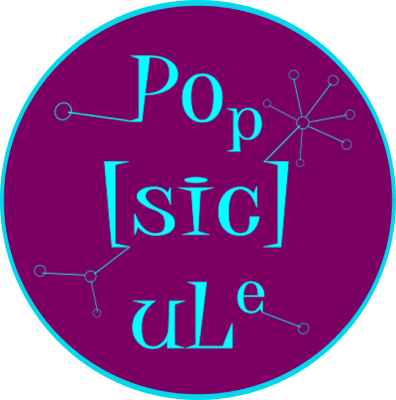
By AMIRAH FARRELL – A ‘Science & Humour’ Project (SCOM6006, 2024)
Jasper’s Journey is a storybook written for children aged 5-7, inspired by my background in geomorphology, and my young nephews and niece. Rocks and landforms surround us, but the way they got there is an abstract topic that is difficult to communicate – especially to children. Jasper’s Journey uses humour and visual narrative overcome this barrier. In doing so, it provides a pathway for young children to more enjoyable engagement with science, as well as an understanding of some of the complex processes that shape our landscapes.
The rock cycle describes the way rocks are formed and recycled through the landscape via predominantly heat, pressure, erosion and weathering (University of California 2024). The rock cycle is conceptually complex and does not follow a linear path. These processes, which are explored in Jasper’s Journey, link directly to early years fundamentals of the Australian science curriculum such as observing your environment and understanding change over time (Australian Curriculum Assessment and Reporting Authority 2024). However, most people are drawn to more mainstream and relatable topics – for example dinosaurs (McNeill et al. 2024). Therefore, alternative communication methods are needed to engage children with the rock cycle.
Humour is frequently used in education and has a wide range of cognitive and social benefits (Chan and Udalagama 2021). Appropriate forms of humour are well documented to help increase attention and engagement of students at all ages though there is less consensus on whether humour improves knowledge retention (Chan and Udalagama 2021, Banas et al. 2010). For young children I suggest that engagement and curiosity should be the aim of science communication, rather than the acquisition or retention of facts. This is supported by Lin, Hong and Huang’s (2012) findings that science literacy in children is strongly correlated with their interest and enjoyment of learning science. They also showed that interest and engagement translate to motivation for people to engage with science later in life. As Newton (2004) argues, science literacy is more of a way of thinking than an accumulation of knowledge and engaging children with science in any form is critical to increasing science literacy in the future.
Consequently, one of the primary goals of Jasper’s Journey is to generate enjoyment and engagement with science. To do this I have used forms of humour found to be age appropriate for young children. These humour types tend to align with the incongruity theory of humour – the idea that we find unexpected or surprising things funny (Buizen and Valkenburg 2004). Incongruous and usually visual types of humour like clownish behaviour, anthropomorphism and funny faces are successfully used in advertising for young children (Buizen and Valkenburg 2004) and these are techniques I emulate in Jasper’s Journey. For example, Jasper the rock is anthropomorphised – he talks to the audience and expresses a wide range of emotions through facial features. Anthropomorphism allows Jasper to take on a clown like role. It also facilitates schadenfreude type humour because it affords the character emotions and thus the ability for something good or bad to happen to a typically neutral object – for example when Jasper is picked up and skipped along the water, he gets upset. Schadenfreude is most effectively described by the superiority humour theory which claims that humour arises from a superior feeling gained from the misfortune of others (Banas et al. 2010). Both incongruity and superiority theories explain preferred humour types of young children (Buizen and Valkenburg 2004).
The Instructional Humour Processing Theory (IHPT) also guided the humour in Jasper’s Journey. It recommends the use of incongruity and proposes that effective instructional humour is both audience appropriate and relevant, without distracting from the intended message (Banas et al. 2010). This provided a useful guide for developing a humorous story but also raised questions about the importance of relevance. A criticism of humour in science communication is that science humour is ill-suited to conveying new ideas because the audience lacks the background knowledge to understand the jokes (Riesch 2014). When your audience is young children, this is inevitable, so humour must be tangential to the science being presented, regardless of the risk of being distracting. A weakness of the IHPT is that it does not account for the context the humour is occurring in, likely because it originates from and assumes a classroom learning environment. In many cases where new information is being presented, the only appropriate humour available is irrelevant to the topic at hand – yet humour can still be advantageous. In Jasper’s Journey the narrative format has been used to help focus the message while the (sometimes irrelevant) humour keeps the audience engaged.
Storybooks – visual narratives – are often the first place we encounter science as children and are powerful science communication tools (Newton 2004, Silva Luna 2022). Shared storybook reading – as intended for Jasper’s Journey – is an active learning activity that leads to rich conversations between participants (Martucci 2014). Like humour, visual narratives can improve motivation and engagement with science (Farinella 2018). In this project, Jasper’s narrative and cartoon-like appearance hold the key to making the scientific topic engaging. Storytelling enables the suspension of disbelief required to permit Jasper’s anthropomorphism, and builds emotional connection which facilitates engagement with abstract or inaccessible subjects – like rocks (Farinella 2018).
Jasper’s Journey applies humour and visual narrative to foster positive engagement with a sometimes inaccessible area of science. By presenting the rock cycle in a humorous way, it aims primarily to spark curiosity and encourage enjoyment of science in children, whilst also conveying interesting scientific knowledge and concepts.



